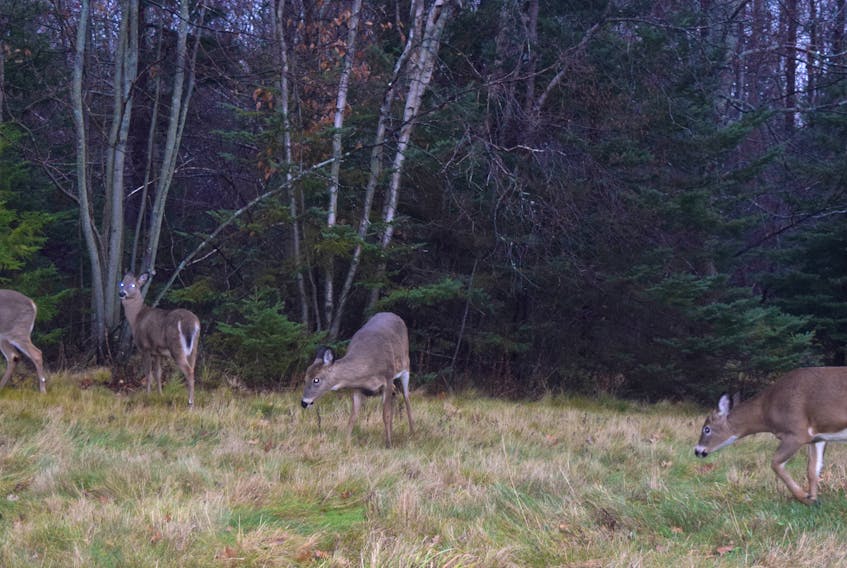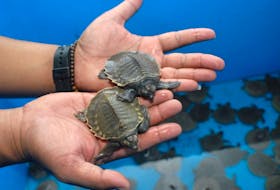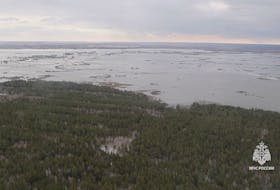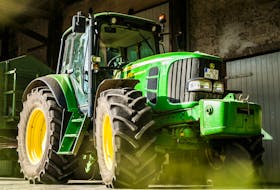PICTOU COUNTY
As the days get shorter, and drives get darker, a fear that troubles many drivers is hitting a deer.
And with the significant number of deer wandering the wilds – and neighbourhoods and roadways – of Pictou County, that fear is understandable.
Coun. Lennie White – who says there are seven or so deer that frequent his own yard in Westville – has discussed the matter with the other members of the Westville town council.
White said he and members of council often wonder how many deer there are in Pictou County – and if that number is growing.
“Anecdotally, there appears to be an ever-increasing number of deer in the town. Not just Westville – all the towns are experiencing this,” said White. “There’s no hard data that I know of, but the problem of deer in urban areas seems to be growing. I personally remember that you’d seldom ever see them in a residential area – it was a rare occurrence.”
Shavonne Meyer, a biologist with the Department of Natural Resources, said Westville’s town council is correct in its theory that the deer population in Pictou County is increasing.
Pictou County’s deer population – and that of Nova Scotia as a whole – is bouncing back, after the reprieve of a mild winter past, after several harsher winters that took a toll on them.
“The winter of 2014-15 knocked back the deer herd, province-wide. Densities were observed as much lower after that. Since then, we’ve had mild winters.”
In Zone 109, an area observed by the department that includes Pictou County, deer densities have been on the rise since the winter of 2014-15, in “a really good recovery from that harsh winter.”
Additionally, this fall has been mild, Meyer noted, so there have been food sources lingering around that usually disappear with the onset of winter weather.
White said the matter of the deer population is discussed on the municipal and provincial levels, since “it’s province-wide, this issue of deer in residential areas of towns.”
“It’s a really difficult one because the nuisance factor is one thing, with them eating the vegetation around your home,” said White. “But more importantly, it’s a safety issue of them crossing the streets and the potential for an accident.”
Other concerns include the fact that deer, parasitized by ticks, are a potential vector for Lyme disease, and the danger of coyotes following those deer into urban centres and residential areas.
There is no easy answer to the question of a strategy to control the issue, White said. Suggestions include potentially herding deer to safer spaces in the wilderness, and culling, but “there’s no real immediate solution at hand.”
Meyer said Pictou County’s communities offer a perfect storm of conditions that attract deer: urban areas near forested and agricultural terrain, mixed with many ornamental plants at residences, that deer love to munch on.
The conditions are “a natural magnet” for deer, said Meyer, who added that wherever you consistently see deer, there is usually a reason – it’s a food source or good shelter.
Agricultural areas are a big attractant for deer year-round, Meyer said, noting that they are a source of food. Another source is some people feeding those deer, leading to the animals to become habituated to urban areas, and less inhibited about entering and dwelling in them.
“A deer not familiar with an urban area may be frightened with the stimuli found here,” said Meyer, “but ones who are familiar with the town wouldn’t be responding to those things the same way.”
Meyer emphasized it’s a bad idea to feed deer, adding, “aside from the social benefits of people enjoying seeing the wildlife, as far as populations are concerned, they are a nuisance and a potential threat to health and safety. There are not a lot of benefits to feeding deer.”
Precautions
To avoid vehicle collisions with deer while driving, Shavonne Meyer, a biologist with the Department of Natural Resources, recommends a handful of precautions.
– Obey speed limits.
– Drive while alert and be aware of your surroundings.
– Be familiar with areas where deer are prone to transversing more often, usually marked by signs.
– Do not feed deer – the fewer sources of food they have, the less likely they are to dwell in a particular area.









